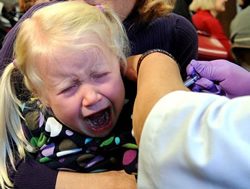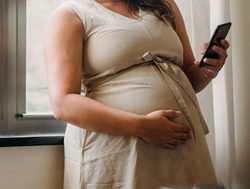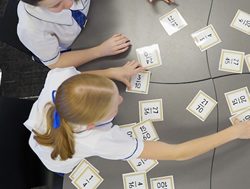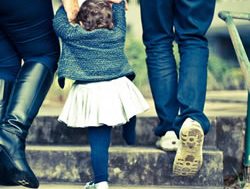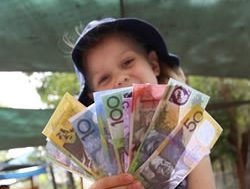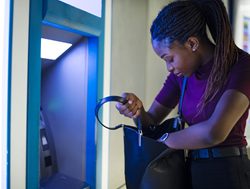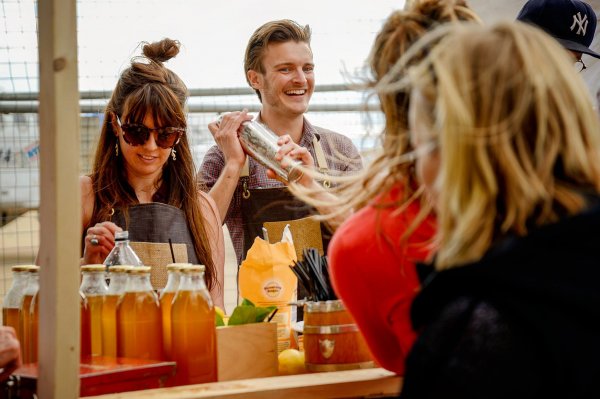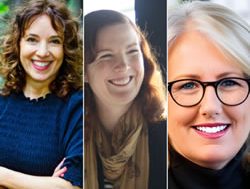Angelique Lu* discusses how Australia’s birth rate compares to the rest of the world.
 Brisbane mum Bernie Turnbull always knew she wanted kids, but like many Australian women her path to motherhood was anything but straightforward.
Brisbane mum Bernie Turnbull always knew she wanted kids, but like many Australian women her path to motherhood was anything but straightforward.
Mrs Turnbull began trying for a child with her husband Chris in her mid 30s, but fertility issues caused by endometriosis saw them go through six miscarriages in seven years.
“And having gone through the rounds of IVF, we’d pretty much decided that that was it, we won’t be trying actively anymore,” she said.
But to their surprise, Mrs Turnbull fell pregnant naturally at 41, and gave birth to her only son at 42.
The couple are part of a growing cohort in Australia, women having one or two children in their 40s.
ABS data shows that despite the world hitting a population of 8 billion today on UN projections and Australia’s population still growing, Australian women having fewer children, at older ages.
Fertility rates are falling
The total fertility rate (TFR) is the average number of children born to a woman in her lifetime.
It hit a record low of 1.59 in Australia 2020 and rebounded slightly to 1.7 per woman last year.
But the TFR is below what’s known as the “replacement number” of 2.1, the figure needed to “replace” the population, which is 2.1.
If these rates continue below 2.1 over the next few decades, without immigration, the Australian population will shrink.
Fertility rates across the world are dropping from their peak in the 1950s.
Australia isn’t alone – in Europe, North America, and some parts of Asia, fertility rates are below that replacement number as well.
Even in Africa, where fertility rates are comparatively high, there is a sustained decline.
Dr Elin Charles-Edwards from the University of Queensland put it in stark terms in an interview with the ABC.
“We have now reached peak child,” she said.
“There will never be more children alive on the Earth than there are today.”
What does it mean for Australia?
Low fertility rates aren’t an issue on their own, said Dr Liz Allen from the ANU Centre for Social Research and Methods.
“My concern now is that we want to arrest the decline to a point where we’re not going to see what’s known as ‘low, low fertility’.
That is, we’re getting below 1.5,” she said.
Policy makers around the world are watching birth rates closely.
Low fertility rates means fewer people able to work to support those who can’t, impacting social support systems and economic growth.
Dr Allen said declining fertility rates over the past three decades were being driven by several factors, including the availability of birth control, female access to education, as well as economic considerations.
“There are far too many barriers for young Australians to have families and the number of children they want,” Dr Allen said.
“I’m talking about housing affordability, job security, gender equality, and of course, now climate change.”
Women are having kids later in life
The median age for Australian mothers hit an all-time high last year of 31.7.
Natalie Raffenot, a mum of four kids, had her first child at 31.
“I only ever wanted two, but life has a funny way of changing plans,” she laughed.
“I ended up having four kids, the first to my first marriage and the second two to the next partner.”
Ms Raffenot, who is now raising her kids on her own, said she wanted to feel financially stable before starting a family in her early 30s.
Cost of living concerns and raising three children with special needs are the biggest issues she faces as a single mum.
“Time management with their appointments, trying to work full time and meet works demands, then trying to meet my financial issues of you know, bills and kids and feeding them,” Ms Raffenot said.
Sydney mum Natalie Williams had thought about having kids from the age of 27, but didn’t meet her partner until 33.
“Dating is terrible,” she laughed.
The step mum of two then had her first biological daughter at 39.
“Definitely a geriatric mum, as they say, and they like to tell you that when you go to appointments,” she said.
“But it wasn’t unusual in my group of friends.
“We’re all having our first babies in our early 30s, late 30s, early 40s.”
Mrs Williams decided to have kids in her late 30s after spending her younger years travelling and developing her career.
Work, cost of living and a traumatic childbirth influenced her decision to only have one child.
“[My daughter] was fine,” she said.
“I was not fine.
“Then I had to start the most physically demanding job of my life, basically on the spot.
“And for around six months to a year I was in a lot of pain, just standing up.
“It was really gruelling.”
ABS figures show that over the past 30 years, the fertility rate of women aged between 35-39 has doubled, and for mothers aged 40-44, it’s tripled.
Dr Allen said the ABS data showed births to mothers in their teens are also at record lows.
“Young Australians, much like their counterparts in similar countries, are having less sex, and so the age at which people begin to have sexual relationships, is increasing,” Dr Liz Allen said.
“Which I think is something that we fail to recognise in this discussion.
“So that’s something to celebrate.”
Couples without dependants are projected to increase
ABS data shows that 3.5 million couples were living without dependants in 2022.
While this figure would include “empty-nesters”, couples whose children have moved out of home during adulthood, this number also include childless families.
“We’re getting better at recognising that a family can be comprised of all manner of things, it doesn’t require the presence of biological children or children at all,” Dr Allen said.
“I think that again, reflects a growing appreciation for a diversity that we perhaps didn’t celebrate previously.”
Wenee Yap had always known she didn’t want kids from a young age.
Yap and her husband decided not to have children because of concerns about climate change and resources.
“There are a lot of people on planet Earth right now — eight billion people.
“I would caution us from continuing to expand,” she said.
Ms Yap said she was open to adopting or fostering children in light of population spikes in other parts of the world.
“Rather than having more of our own children, we decided perhaps we could be part of a broader solution.”
Bernie Turnbull said the climate was also a factor her family had considered.
“[The environment] was something that we thought about from the moment we had our child,” Turnbull said.
“We want to make sure that our son is going to be beneficial to society and not a drain on society from that perspective.
“So we are very environmental when it comes to our lifestyle.”
Global policy makers have recognised that low fertility rates can have positive consequences for the environment, easing pressure on the environment and reducing demand on food production.
Dr Allen said climate change considerations is increasingly becoming a factor in family planning decisions.
“When it comes to pollution, and climate change issues, per person, a rich country like Australia is polluting above its weight,” she said.
“We need to be better at ensuring that we take climate change more seriously because what’s happening now is that people are choosing not to have children, perhaps against their individual desires.”
*Angelique Lu is a reporter and producer for the ABC.
This article first appeared at abc.net.au.


